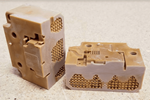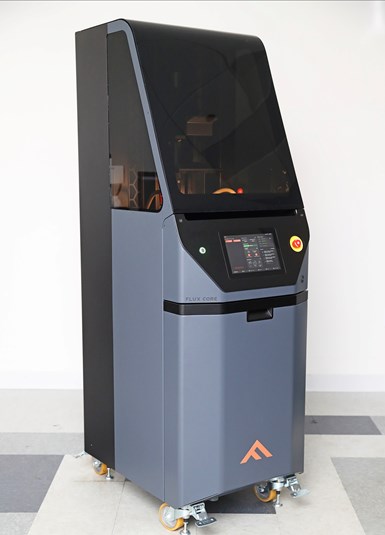Fortify ships Flux Core 3D printer to Ierus Technologies
Novel radio-frequency structures for defense systems are to be designed for and built via Fortify’s Flux Core composite-photopolymer 3D printer.
Fortify (Boston, Mass., U.S.), a provider of advance composite-photopolymer printers, announced that Ierus Technologies (Huntsville, Ala., U.S.) received a Flux Core 3D printer and Flux Developer materials onboarding software for the design and engineering of defense systems.
“Placing a printer at the Ierus Technologies headquarters provides a critical resource to support the growing need for additive manufacturing [AM] solutions in electromagnetics for defense,” Eric Versluys, director of defense programs at Fortify, says. “Fortify’s printers are uniquely positioned to print low-loss 3D printing materials, enabling performance advantages where traditional manufacturing falls short (due to machining, weight and size).”
Ierus Technologies, a provider of engineering and design solutions for defense and commercial customers, such as sensors and strategic systems, is designing novel radio frequency (FR) structures such as graded refractive index (GRIN) lenses leveraging Fortify’s Flux Core system. The Flux Core system is said to enable companies like Ierus to take advantage of the design freedoms enabled by Radix, a 3D printable low-loss material developed by Rogers Corp. (Chandler, Ariz., U.S.).
“The Fortify 3D printer line will enable Ierus Technologies to develop complex RF structures that push the limits of traditional RF architectures with novel electromagnetic phenomenologies,” Jason Keen, CEO of Ierus Technologies, adds.
Ierus will leverage the Flux Developer toolkit, an open platform for the development of viscous and filled resins, to optimize printing of RF devices.
Related Content
-
Combining multifunctional thermoplastic composites, additive manufacturing for next-gen airframe structures
The DOMMINIO project combines AFP with 3D printed gyroid cores, embedded SHM sensors and smart materials for induction-driven disassembly of parts at end of life.
-
Manufacturing the MFFD thermoplastic composite fuselage
Demonstrator’s upper, lower shells and assembly prove materials and new processes for lighter, cheaper and more sustainable high-rate future aircraft.
-
Plant tour: Albany Engineered Composites, Rochester, N.H., U.S.
Efficient, high-quality, well-controlled composites manufacturing at volume is the mantra for this 3D weaving specialist.

















